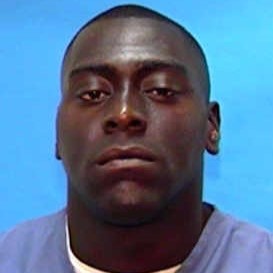
1968 - 1997
Benjamin Atkins
Summary
Name:
Nickname:
The Woodward Corridor Killer / The Highland Park Strangler / TonyYears Active:
1991 - 1992Birth:
August 26, 1968Status:
DeceasedClass:
Serial KillerVictims:
11Method:
Strangulation / TortureDeath:
September 17, 1997Nationality:
USA
1968 - 1997
Benjamin Atkins
Summary: Serial Killer
Name:
Benjamin AtkinsNickname:
The Woodward Corridor Killer / The Highland Park Strangler / TonyStatus:
DeceasedVictims:
11Method:
Strangulation / TortureNationality:
USABirth:
August 26, 1968Death:
September 17, 1997Years Active:
1991 - 1992bio
Benjamin Atkins, also known as the Woodward Corridor Killer, was born on August 26, 1968, in Detroit, Michigan. Raised in a challenging environment with drug-addicted parents, Atkins experienced a tumultuous childhood, including abuse and neglect. This led him to a life on the streets, where he eventually developed his own drug habits and antisocial tendencies.
Between December 1991 and August 1992, Atkins committed a series of horrific crimes in Detroit and Highland Park, Michigan. He targeted vulnerable women, mostly prostitutes or drug addicts, whom he lured to abandoned buildings with promises of drugs or money. Once isolated, Atkins assaulted and strangled his victims, leaving their bodies in the decrepit buildings where he had killed them. His violent spree resulted in the deaths of eleven women.
Atkins was finally arrested on August 21, 1992, after being identified by a previous assault victim. Despite initially denying his involvement, he eventually confessed to all eleven murders after intense police interrogation. He was convicted in 1994, receiving multiple life sentences. Atkins died on September 17, 1997, from AIDS-related complications while incarcerated.
murder story
In late 1991, Benjamin Atkins, later dubbed the Woodward Corridor Killer, began a deadly rampage that terrorized Detroit and Highland Park, Michigan. Over the course of several months, Atkins preyed on vulnerable women, exploiting their need for shelter or substance, to draw them into abandoned buildings.
Once isolated, Atkins would attack, using his physical strength to overpower his victims. His method of murder was consistent and brutal: he strangled each woman, a grim signature that marked his killings. The tragic victims were often discovered in the very places they were murdered, hidden away in the crumbling ruins of forgotten structures.
The urgency and frequency of these murders captured the attention of local law enforcement. Atkins's approach to selecting victims and the locations for his crimes created a pattern that eventually led to his capture. In August 1992, one of his intended victims managed to escape and provided crucial information to the police.
Upon his arrest, Atkins initially resisted confessing to the murders. However, faced with mounting evidence and after intense interrogations, he admitted to killing eleven women in total. His confessions provided detailed accounts of his actions and the motives behind them, which were rooted in his own troubled past and a deep-seated animosity towards women.
Benjamin Atkins's trial was swift and conclusive. Found guilty on multiple counts of murder, he was sentenced to life in prison without the possibility of parole. His imprisonment, however, was short-lived; Atkins died in 1997 from health complications related to AIDS.